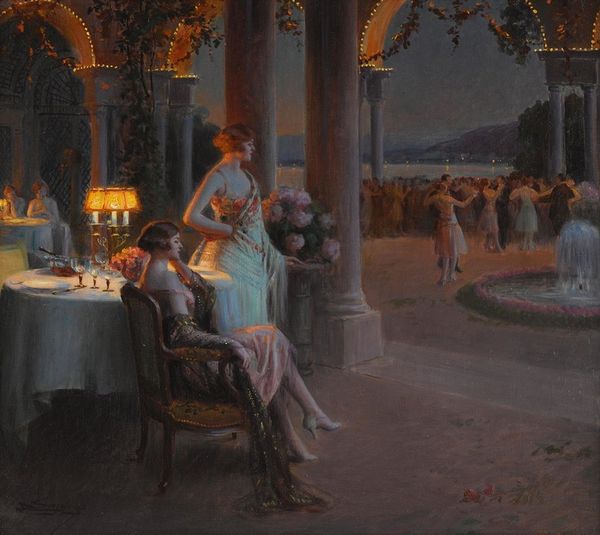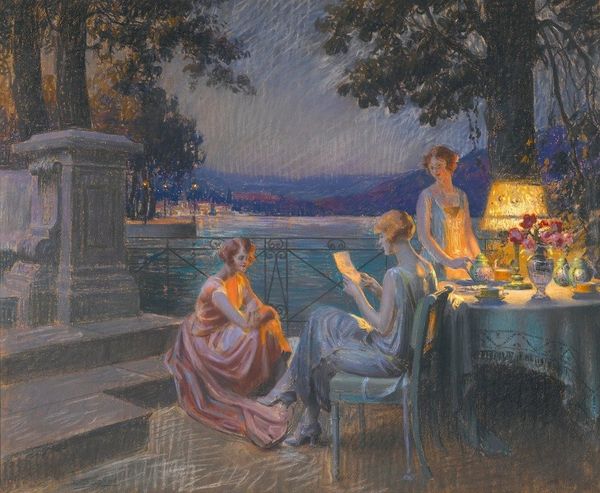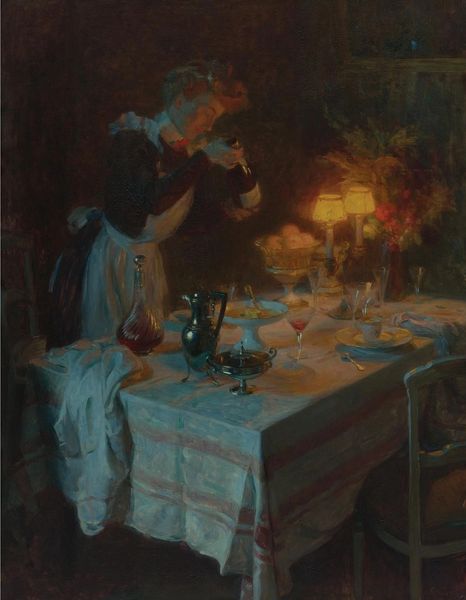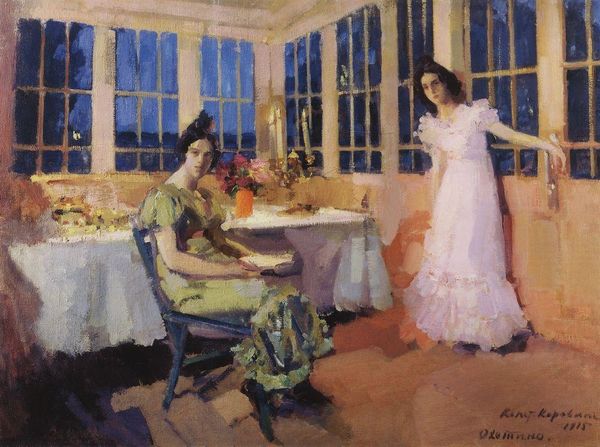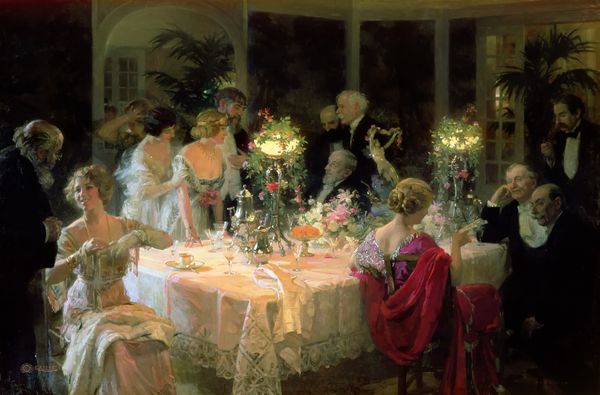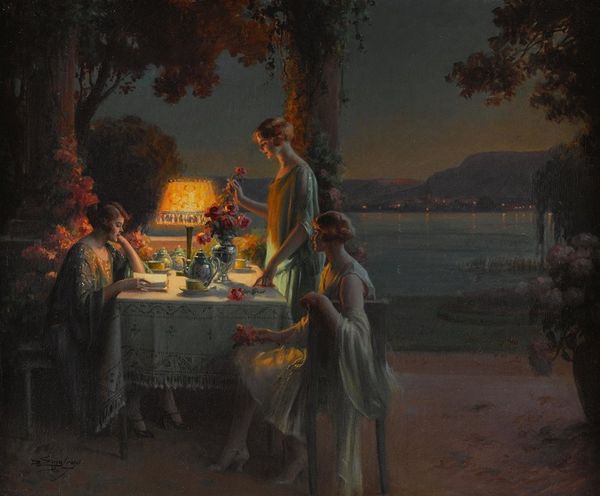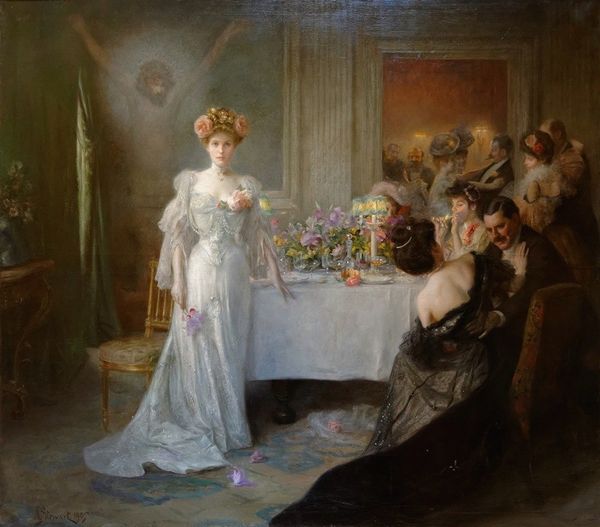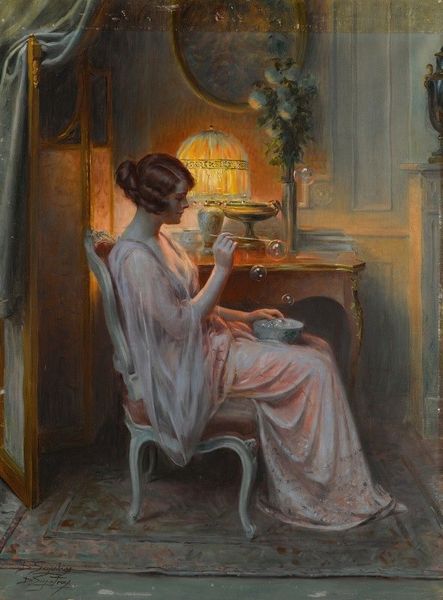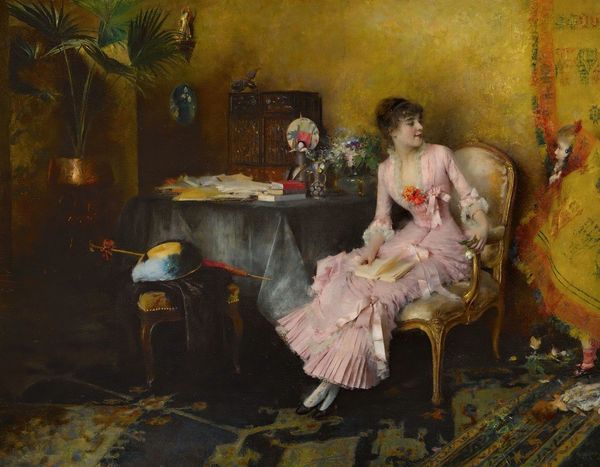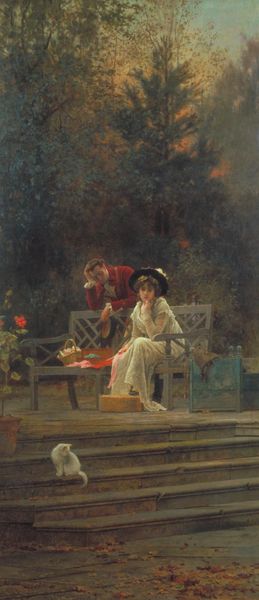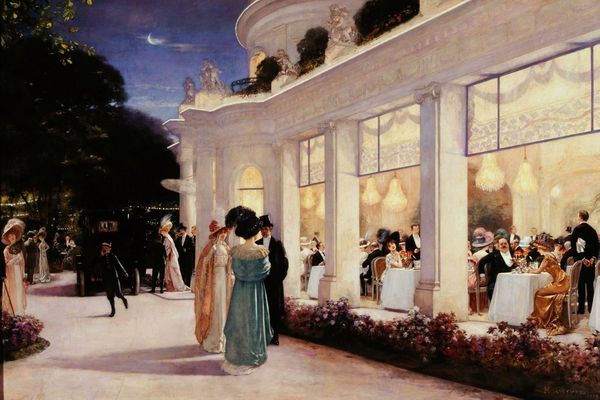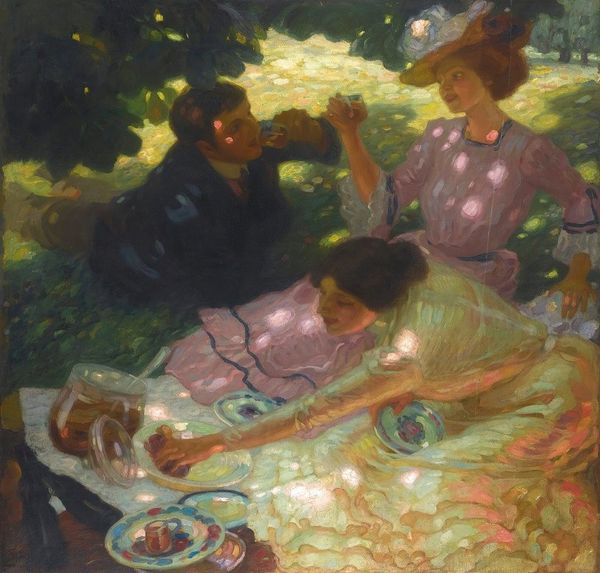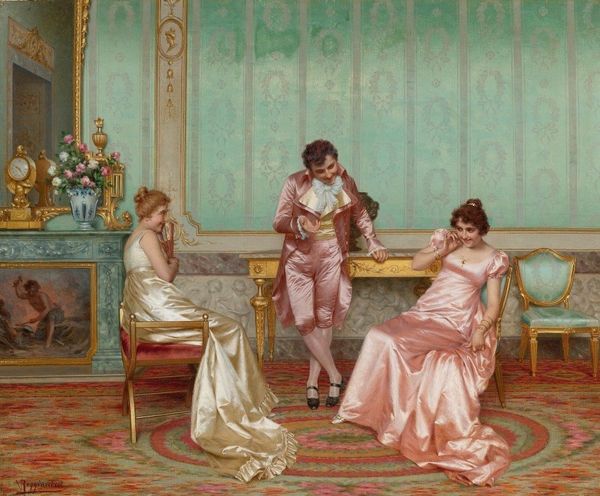
painting, oil-paint
#
portrait
#
figurative
#
painting
#
impressionism
#
oil-paint
#
landscape
#
figuration
#
intimism
#
group-portraits
#
romanticism
#
cityscape
#
genre-painting
Copyright: Public Domain: Artvee
Curator: Delphin Enjolras, a French artist known for his intimate genre scenes, painted this work, "A Candlelit Dinner." The medium is oil paint on, I believe, canvas, though the specific details of the canvas weave aren't readily available. Editor: Immediately, the interplay of light strikes me. It’s soft, filtered, almost dreamlike, and creates such an intimate, secluded world, separated from the darker, blurry environment. How much does it play with or push against notions of idealized femininity? Curator: I'm intrigued by the production choices that were made for that light, how the oil paint was handled to achieve such luminance in what must have been fairly dark conditions, I presume with manufactured materials. The pigments and their grinding contribute significantly to this aesthetic. Editor: Absolutely, and I’d suggest that we think more deeply about this idea of a 'private' space. These are likely privileged women; note their clothing, which presupposes their access to both leisure and resources, so how much are these scenes reflective of turn-of-the-century, high-society indulgences, perhaps in contrast with a growing awareness of the lower classes? Curator: Precisely. Consider, too, that this image likely was not crafted from direct observation. Rather, this suggests a manufactured scene, perhaps relying on photographic aids and pre-mixed paints purchased ready-made. And how did those modes of making, that accessibility of resources, transform the artist's labor? Editor: Good question. I believe the spatial construction is also very suggestive. The scene looks over a vista with a distant glow—a town at the water’s edge, maybe. In terms of the social context, could that also signify the bright prospects afforded to women of certain classes while highlighting a deep imbalance or injustice toward others? Curator: And yet, beyond a focus on the figures themselves and their environment, consider the composition, that table laden with glass, reflecting candle light that wouldn’t have been mass produced until fairly recently; also, we shouldn’t neglect the social dynamics fostered by a society rapidly embracing the technologies and means of consumer capitalism. Editor: Thinking about it now, I see that there’s almost a feeling of disconnect about it all. Though beautifully executed and carefully composed, does it reinforce restrictive ideals and project the artificial comforts of a small set of people to justify a huge societal lack of fair opportunity and equal respect? Curator: Indeed. By centering on the artist’s method of manufacture and the resources they consumed, we get insight not merely into a single picture, but into the era's culture and system, which influenced even seemingly private affairs. Editor: Thinking of our modern era, it is valuable to ask whether what appears as beauty is actually equitable for people, and which of their experiences are being validated.
Comments
No comments
Be the first to comment and join the conversation on the ultimate creative platform.
